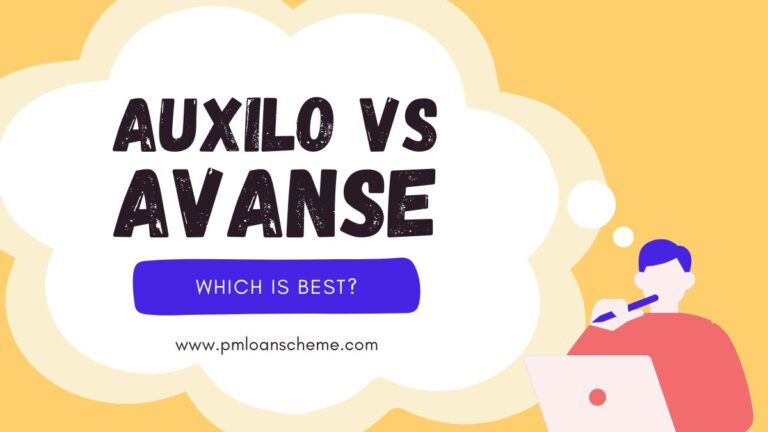Student Loan Refinancing in the USA
Refinancing student loans can significantly impact your financial future by potentially lowering your monthly payments, interest rate, or both. In the U.S., many borrowers explore refinancing as a way to manage student loan debt more effectively, but navigating the options can be complex. This article covers everything you need to know about refinancing student loans, including key comparisons, tips for timing your refinancing, and answers to frequently asked questions.

What Is Student Loan Refinancing?
Student loan refinancing is the process of obtaining a new loan with a private lender to pay off existing student loans. The refinanced loan often has a different (ideally lower) interest rate, a new repayment term, and consolidated monthly payments, making it a popular option for those with high-interest federal or private student loans. Also, Check out best education loans for students with bad credit.
Top Student Loan Refinance Lenders 2024
SoFi
- Fixed APR: 2.99% – 7.99%
- Variable APR: 1.99% – 6.94%
- Minimum Credit Score: 650+
- Loan Terms: 5, 10, 15, 20 years
- Highlights: No fees, member benefits, comprehensive support
Earnest
- Fixed APR: 2.45% – 7.89%
- Variable APR: 1.74% – 6.99%
- Minimum Credit Score: 650+
- Loan Terms: 5-20 years
- Highlights: Customizable repayment terms with flexibility for various borrower needs
LendKey
- Fixed APR: 3.15% – 8.74%
- Variable APR: 2.50% – 7.99%
- Minimum Credit Score: 680+
- Loan Terms: 5, 7, 10, 15 years
- Highlights: Access to community bank and credit union lenders, personalized service
CommonBond
- Fixed APR: 2.83% – 7.02%
- Variable APR: 1.99% – 6.84%
- Minimum Credit Score: 700+
- Loan Terms: 5, 7, 10, 15, 20 years
- Highlights: Social impact programs, flexible repayment options tailored to borrowers
Laurel Road
- Fixed APR: 2.80% – 6.99%
- Variable APR: 1.89% – 5.99%
- Minimum Credit Score: 700+
- Loan Terms: 5, 7, 10, 15, 20 years
- Highlights: Specialized refinancing options for physicians, personalized benefits
Why Consider Refinancing Your Student Loans?
Education loan refinance might be a good idea if:
- You have high-interest loans: Refinancing can help reduce your interest rates, especially if you initially took out loans with high rates.
- You want to save money: Lowering your interest rate can save thousands over the life of the loan.
- You want simplified payments: If you have multiple loans, refinancing can consolidate them into one monthly payment.
- Your financial situation has improved: If your credit score or income has improved since taking out the original loan, refinancing may offer better terms.
When to Refinance Student Loans
The best time to refinance depends on your financial goals, income, and credit score. Here are a few ideal scenarios:
- Strong Credit Score: Many lenders require a credit score of 650 or above for competitive rates, with top rates offered to those over 750.
- Stable Income: Lenders often prefer borrowers with a steady job and income source.
- Interest Rate Drops: If market rates have decreased significantly since you took out your loans, you could benefit by refinancing to lock in a lower rate.
- Federal Benefits Aren’t Needed: Federal loans come with protections like income-driven repayment plans and deferment options. Refinancing with a private lender eliminates these options, so consider if this aligns with your financial needs.
How to Refinance Student Loans
- Check Your Credit Score: A higher credit score will get you better refinancing rates.
- Research Lenders: Compare different lenders to see what rates and terms they offer. Each lender has unique requirements and loan offerings.
- Get Prequalified: Many lenders allow prequalification, which provides estimated rates without a hard credit inquiry.
- Compare Rates: Use loan comparison sites to explore the best rates available to you.
- Submit an Application: Once you’ve chosen a lender, complete the application. You’ll need to provide financial details and documentation, like proof of income.
- Sign the New Loan Agreement: After approval, sign the new agreement and the lender will pay off your original loan(s), consolidating them under the new terms.
Comparison of Top Student Loan Refinancing Lenders in the USA
| Lender | Fixed APR | Variable APR | Minimum Credit Score | Loan Terms | Highlights |
|---|---|---|---|---|---|
| SoFi | 2.99% – 7.99% | 1.99% – 6.94% | 650+ | 5, 10, 15, 20 years | No fees, member benefits |
| Earnest | 2.45% – 7.89% | 1.74% – 6.99% | 650+ | 5-20 years | Customizable repayment terms |
| LendKey | 3.15% – 8.74% | 2.50% – 7.99% | 680+ | 5, 7, 10, 15 years | Works with community banks |
| CommonBond | 2.83% – 7.02% | 1.99% – 6.84% | 700+ | 5, 7, 10, 15, 20 years | Social impact, flexible options |
| Laurel Road | 2.80% – 6.99% | 1.89% – 5.99% | 700+ | 5, 7, 10, 15, 20 years | Physician-specific refinancing |
Note: Rates and terms are subject to change. Always check the lender’s website for current information.
Pros and Cons of Student Loan Refinancing
Pros:
- Lower Interest Rates: Lower rates mean saving money over the life of the loan.
- Reduced Monthly Payments: A longer loan term or lower rate can lower monthly payments.
- Flexible Terms: Private lenders offer more variety in repayment terms, from 5 to 20 years.
Cons:
- Loss of Federal Protections: Refinancing federal loans with a private lender forfeits benefits like income-driven repayment, deferment, and forgiveness.
- Credit-Based Rates: Interest rates depend on creditworthiness; low credit scores may not qualify for the best rates.
Alternatives to Refinancing Student Loans
If refinancing doesn’t align with your goals, here are other strategies to consider:
- Income-Driven Repayment Plans: For federal loans, these plans adjust monthly payments based on your income and family size.
- Loan Forgiveness Programs: Programs like Public Service Loan Forgiveness (PSLF) can forgive federal loans for qualified individuals working in certain sectors.
- Deferment and Forbearance: If facing financial hardship, deferment and forbearance allow you to pause payments temporarily on federal loans.
Key Takeaways on Student Loan Refinancing
Student loan refinancing can offer significant benefits like lower interest rates, reduced monthly payments, and the opportunity to consolidate loans. However, losing federal protections is a major consideration, so it’s essential to evaluate both your current financial situation and future goals. Before committing, research lenders, compare rates, and ensure refinancing aligns with your financial well-being.
By understanding the nuances of refinancing and the various options available, you can make a well-informed decision that supports your financial freedom.
FAQs: Student Loan Refinancing
Does refinancing hurt your credit?
hard credit inquiry during the application process may cause a small, temporary drop in your credit score. However, successful refinancing can improve your score in the long run as you make timely payments.
Can you refinance student loans multiple times?
Yes, refinancing multiple times is allowed, and you may want to do so if your credit score improves or rates drop significantly.
What is the difference between refinancing and consolidating?
While both options simplify payments, federal consolidation combines federal loans without changing interest rates, whereas refinancing replaces federal or private loans with a new loan, typically with a different interest rate.
Is it better to refinance or to keep federal protections?
If you rely on income-driven repayment, deferment, or forgiveness options, retaining federal protections is wise. Those with stable income and good credit may benefit more from refinancing.
Can parents refinance Parent PLUS Loans?
Yes, many lenders allow Parent PLUS loans to be refinanced in the parent’s or child’s name, provided credit and income requirements are met.


